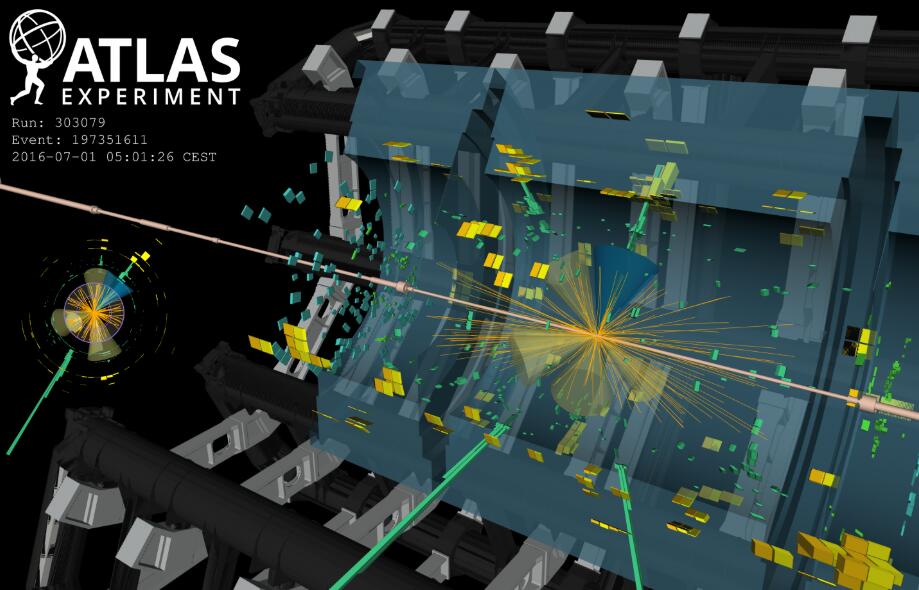Studying the properties of Higgs boson is the most important goal for the Large Hadron Collider (LHC) following the discovery of Higgs particle in 2012. At the sixth LHC Physics Conference (LHCP 2018) held on June 4th, 2018, ATLAS and CMS collaborations simultaneously announced their independent discoveries of the so-called “ttH production”, a rare process where a pair of top quarks emits a Higgs boson. Results from ATLAS and CMS both demonstrate significances exceeding 5 standard deviations, providing direct evidence of the Yukama coupling between Higgs boson and top quarks. Both results were published on PRD and PRL, respectively. The CERN released this news on June 4, introducing the discovery process and its significance in the form of popular science.

ATLAS observes direct interaction of Higgs boson with top quarks. (Image from ATLAS Experiment)
As a significant part of this discovery, USTC-ATLAS research team from The Center for Particle Science and Technology of USTC and the State Key Laboratory of Particle Detection & Electronics currently includes 10 professors and associate professors, 1 special research fellow, 4 postdoctoral fellows, and 20 doctoral graduate students. Under the leadership of Academician ZHAO Zhengguo, the research team conducted research work including detector operation, data reconstruction, physical research and detector upgrades during the ATLAS experiment. Studying the properties of Higgs boson has always been the main direction for the USTC-ATLAS team. In the study, WANG Rongkun, a doctoral student of the research team, and Dr. Rustem Ospanov, the special research fellow, directly participated in the data analysis work. WANG Rongkun made important contributions to the research of ZZ* decay channel. Dr. Rustem Ospanov used multivariate data analysis to suppress backgrounds from nonprompt and fake leptons, which played a decisive role in the discovery of multi-lepton decay channel.